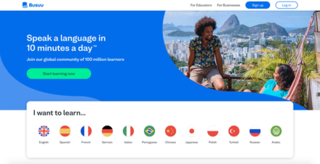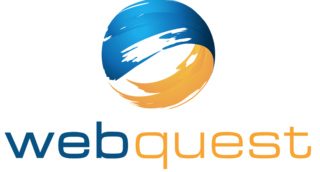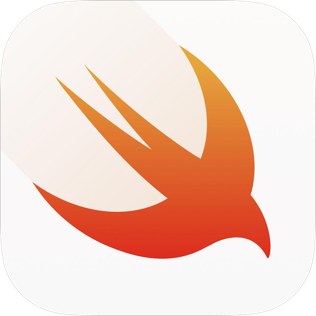Educational games are games explicitly designed with educational purposes, or which have incidental or secondary educational value. All types of games may be used in an educational environment, however educational games are games that are designed to help people learn about certain subjects, expand concepts, reinforce development, understand a historical event or culture, or assist them in learning a skill as they play. Game types include board, card, and video games.
Situated learning is a theory that explains an individual's acquisition of professional skills and includes research on apprenticeship into how legitimate peripheral participation leads to membership in a community of practice. Situated learning "takes as its focus the relationship between learning and the social situation in which it occurs".
A learning management system (LMS) is a software application for the administration, documentation, tracking, reporting, automation, and delivery of educational courses, training programs, materials or learning and development programs. The learning management system concept emerged directly from e-Learning. Learning management systems make up the largest segment of the learning system market. The first introduction of the LMS was in the late 1990s. Learning management systems have faced a massive growth in usage due to the emphasis on remote learning during the COVID-19 pandemic.
BrainPop is a group of children's educational websites based in New York City. It hosts over 1,000 short animated movies for students in grades K–8, together with quizzes and related materials, covering the subjects of science, social studies, English, math, engineering and technology, health, arts and music. In 2022, Kirkbi A/S, the private investment and holding company that owns a controlling stake in Lego, acquired BrainPop.
Educational technology is the combined use of computer hardware, software, and educational theory and practice to facilitate learning. When referred to with its abbreviation, "EdTech," it often refers to the industry of companies that create educational technology. In EdTech Inc.: Selling, Automating and Globalizing Higher Education in the Digital Age, Tanner Mirrlees and Shahid Alvi (2019) argue "EdTech is no exception to industry ownership and market rules" and "define the EdTech industries as all the privately owned companies currently involved in the financing, production and distribution of commercial hardware, software, cultural goods, services and platforms for the educational market with the goal of turning a profit. Many of these companies are US-based and rapidly expanding into educational markets across North America, and increasingly growing all over the world."
Computer-supported collaborative learning (CSCL) is a pedagogical approach wherein learning takes place via social interaction using a computer or through the Internet. This kind of learning is characterized by the sharing and construction of knowledge among participants using technology as their primary means of communication or as a common resource. CSCL can be implemented in online and classroom learning environments and can take place synchronously or asynchronously.

TeacherTube is a video sharing website. It is designed to allow those in the educational industry, particularly teachers, to share educational resources such as video, audio, documents, photos, groups and blogs. The site contains a mixture of classroom teaching resources and others designed for teacher training. A number of students have also uploaded videos that they have made as part of K-12 and college courses. As of July 2008, the website contained over 26,000 videos. In October 2010, TeacherTube had over a million members and over 400,000 educational videos. It has found favor with educators from institutions where YouTube content is blocked by content filtering systems.

Busuu is a language learning platform on web, iOS and Android that allows users to interact with native speakers. In 2021, Chegg acquired Busuu for $436 million.

A WebQuest is an inquiry-oriented lesson format in which most or all the information that learners work with comes from the web. These can be created using various programs, including a simple word processing document that includes links to websites.

Mindomo is a versatile freemium collaborative mind mapping, concept mapping and outlining tool developed by Expert Software Applications. It can be used to develop ideas and interactively brainstorm, with features including sharing, collaboration, task management, presentation and interactive web publication.
Augmented learning is an on-demand learning technique where the environment adapts to the learner. By providing remediation on-demand, learners can gain greater understanding of a topic while stimulating discovery and learning. Technologies incorporating rich media and interaction have demonstrated the educational potential that scholars, teachers and students are embracing. Instead of focusing on memorization, the learner experiences an adaptive learning experience based upon the current context. The augmented content can be dynamically tailored to the learner's natural environment by displaying text, images, video or even playing audio. This additional information is commonly shown in a pop-up window for computer-based environments.
iKen.in is an interactive knowledge sharing & social networking site, built on a collaborative learning model. The website was built keeping in mind the specific needs and dynamics involved in a learning process. Its participatory learning model helps users to share content and connect with peers. Apart from User Generated Content, UGC, users can also learn by taking tests available on the website which are customized for each standard (grade) in the K-12 segment. Also, Iken.in has a play section that features educational interactive games.

Prezi is an American video and visual communications software company founded in 2009 in Hungary, with offices in San Francisco, Budapest and Riga as of 2020. According to Prezi, in 2021, the software company has more than 100 million users worldwide who have created approximately 400 million presentations. In 2019, they launched Prezi Video, a tool that allows for virtual presentations within the video screen of a live or recorded video. The word Prezi is the short form of "presentation" in Hungarian. As of January 2022, the company had around 300 employees in 13 countries.
Social learning tools are tools used for pedagogical and andragogical purposes that utilize social software and/or social media in order to facilitate learning through interactions between individuals and systems. The idea of setting up "social learning tools" is to make education more convenient and widespread. It also allows an interaction between users and/or the software which can bring a different aspect to learning. People can acquire knowledge by distance learning tools, for instance, Facebook, Twitter, Khan Academy and so on. Social learning tools may mediate in formal or informal learning environments to help create connections between learners, instructors and information. These connections form dynamic knowledge networks. Social learning tools are used in schools for teaching/learning and in businesses for training. Within a school environment, the use of social learning tools can affect not only the user (student) but his/her caretaker as well as his/her instructor. It brings a different approach to the traditional way of learning which affects the student and his/her support circle. Companies also use social learning tools. They used them to improve knowledge transfer within departments and across teams. Businesses use a variety of these tools to create a social learning environment. They are also used in company settings to help improve team work, problem solving, and performance in stressful situations.
Instructure, Inc. is an educational technology company based in Salt Lake City, Utah, United States. It is the developer and publisher of Canvas, a web-based learning management system (LMS), and MasteryConnect, an assessment management system. Prior to its IPO in 2021, the company was owned by private-equity firm Thoma Bravo.
A virtual learning environment (VLE) in educational technology is a web-based platform for the digital aspects of courses of study, usually within educational institutions. They present resources, activities, and interactions within a course structure and provide for the different stages of assessment. VLEs also usually report on participation and have some level of integration with other institutional systems. In North America, VLEs are often referred to as Learning Management Systems (LMS).
Social media language learning is a method of language acquisition that uses socially constructed Web 2.0 platforms such as wikis, blogs, and social networks to facilitate learning of the target language. Social media is used by language educators and individual learners that wish to communicate in the target language in a natural environment that allows multimodal communication, ease of sharing, and possibilities for feedback from peers and educators.
Mashups are a combination of two or more data sources that have been integrated into one source. They typically consist of graphics, texts, audio clips, and video that have been sourced from various media such as blogs, wikis, YouTube, Google Maps, etc., into a new product. Remix is a related term, referring to how data sources have been combined to produce a constellation of elements that were not originally intended by the creators. Mashups rely on open and discoverable resources, open and transparent licensing, and open and remixable formats.
Concentric Sky is a software development company located in Eugene, Oregon. The company was founded in 2005 by Wayne Skipper, and grew to nearly 90 employees prior its sale to Instructure in April 2022. In 2015, Cale Bruckner was promoted to President of the company. Skipper continued to serve as CEO until the company's sale. Concentric Sky is the maker of Badgr and is a well-known contributor to the development of open technology standards focused on advancing equity outcomes for learners and workers.

Swift Playgrounds is an educational tool and development environment for the Swift programming language developed by Apple Inc., initially announced at the WWDC 2016 conference. It was introduced as an iPad application alongside iOS 10, with a macOS version introduced in February 2020. It is available for free via Apple's App Store for iPadOS and Mac App Store for macOS.





